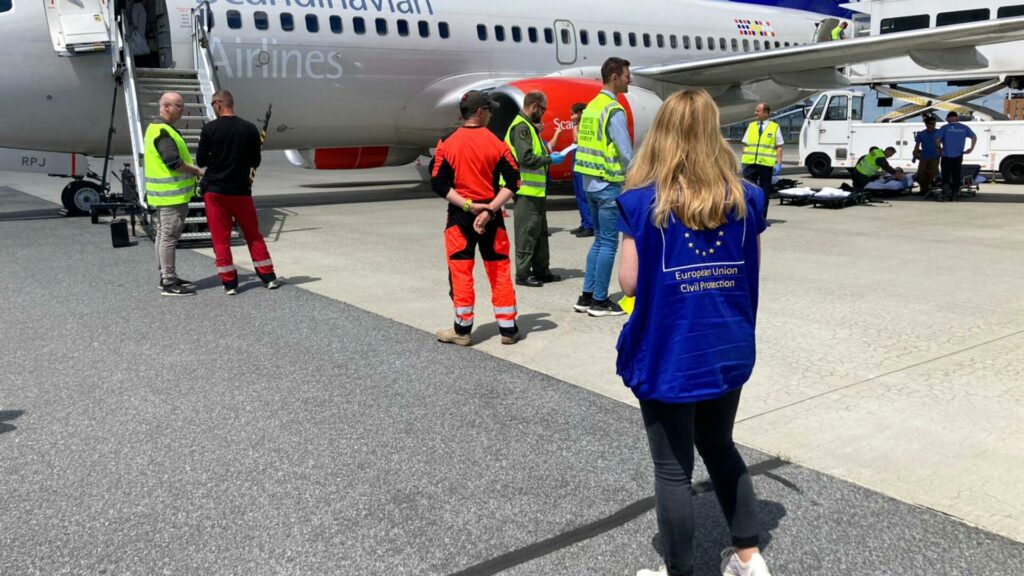The European Commission announced on Friday that the EU has coordinated 1,000 medical evacuations of Ukrainian patients to provide them with specialised healthcare in hospitals across Europe.
The medical evacuations (MEDEVAC) are financially and operationally supported by the EU Civil Protection Mechanism and coordinated by its Emergency Response Coordination Centre (ERCC). The scheme supports the transfer of patients that fulfil the eligibility criteria, be they chronically ill or wounded by the war.
As the war continues, and the number of wounded people in Ukraine increases day by day among both civilians and soldiers, local hospitals are struggling to keep up with the demand. Many hospitals and clinics in Ukraine have also been hit by Russian bombing and cannot carry out live-saving operations on chronically ill civilian patients.
To relieve pressure on local hospitals, since 11 March, the EU has been coordinating patient transfers to other European countries who have available hospital capacity.
The patients have been transferred to 18 countries: Germany, France, Ireland, Italy, Denmark, Sweden, Romania, Luxembourg, Belgium, Spain, Portugal, the Netherlands, Austria, Norway, Lithuania, Finland, Poland and the Czechia. A breakdown by country is shown in this map which was published by the Commission on 5 August.
The distribution by country is uneven with Germany (363 patients), Spain (179), and Italy (110) receiving most patients until now and other countries receiving few or none patients. France has only received 21 patients. In e.g. Sweden, which has received 23 patients until now, hospitals are still overwhelmed by treatments that were postponed during the COVID-19 pandemic.
However, a Commission official told The Brussels Times that the uneven distribution does not necessarily reflect a lack of capacity in some EU member states. “At this stage, we haven’t encountered issues with finding a destination for the patients, with roughly a 2:1 ratio for offers to requests.”
The transfer mechanism operates on a voluntary basis, and the patients also decide whether the destination country is suitable for them, he explained. “The EU is working closely with the member states and Norway to make sure that all requests for patient transfers will take place.”
“The EU Civil Protection Mechanism has allowed patients in urgent need of treatment and care to receive it in hospitals across the EU, while relieving pressure on the healthcare systems of Ukraine's neighbouring countries,” said European Health Commissioner Stella Kyriakides . “This is true European solidarity in action.”
“Together with Ukrainian authorities, we are also looking into ways to bring patients back home when they have finished their treatment, if they choose to do so,” she added. “This lifesaving work will continue, as will the EU's unwavering commitment to supporting Ukraine”.
M. Apelblat
The Brussels Times

